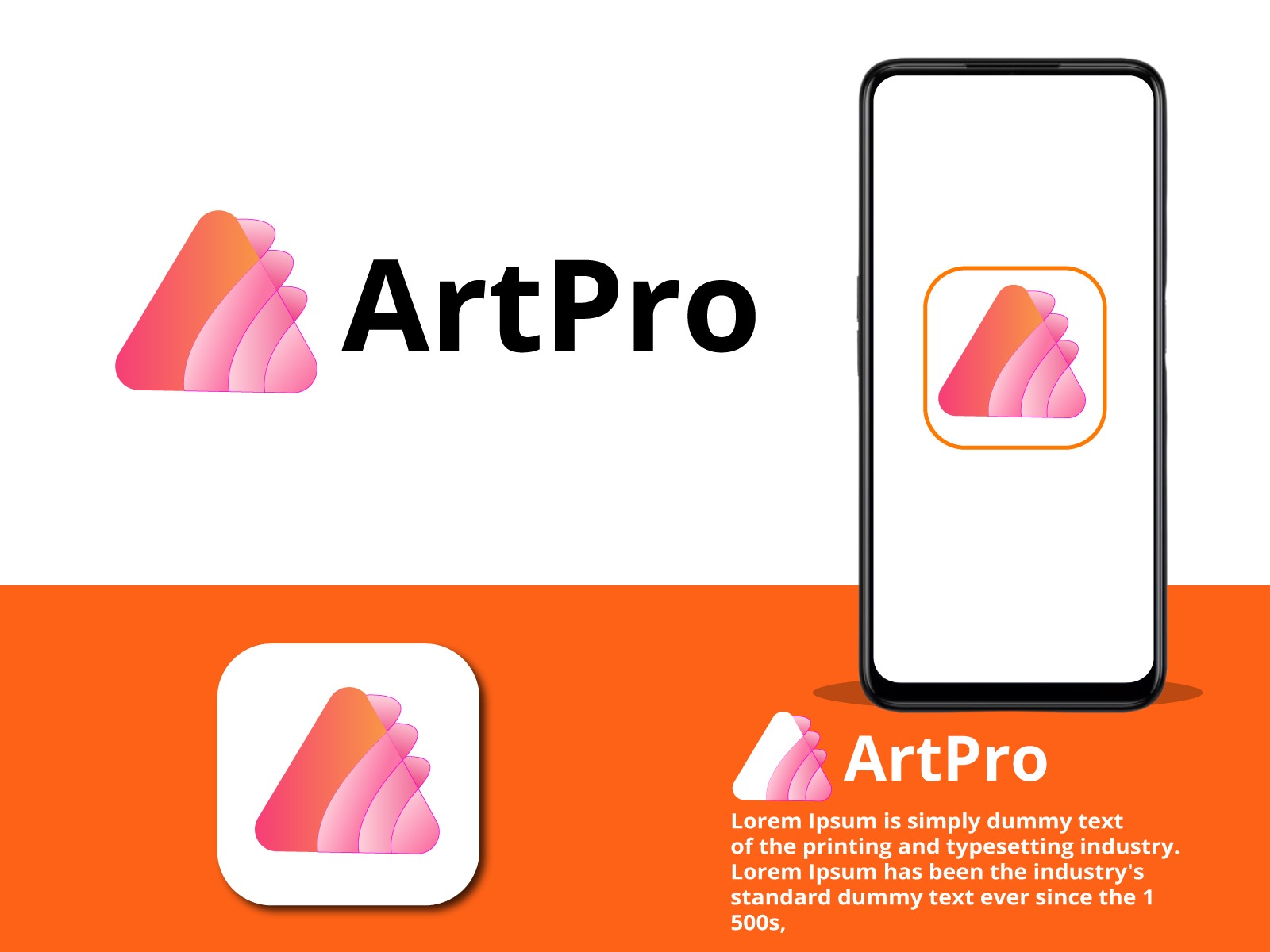Explore the fusion of luxury and minimalism in our latest blog, where we delve into the art of crafting bespoke logos that embody simplicity, sophistication, and timeless elegance for premium brands.
luxury minimalist custom logo design
In the dynamic world of logo design, an emerging trend perfectly marries the opulence of luxury logo design with the simplicity of the minimalist logo. This harmony is in the luxury minimalist logo, a perfect blend of modern and timeless elegance. At the heart of this trend lies the principle of ‘less is more,’ a strategy that has given rise to modern minimalist designs that captivate and resonate with premium brands. Whether you’re seeking inspiration for logo ideas, considering ready-made templates, or exploring professional logo design services, our blog delves deep into the luxury minimalist logo design, guiding you through its nuances and showcasing its undeniable appeal in design. Let’s dive into our blog!
What is a custom logo design?
A custom logo is a uniquely crafted design for you and your business. This implies that the logo has not been used previously for any other enterprise. Custom logos involve the active input of the business owner, ensuring a personalized touch. Custom logo design creates a distinctive and carefully curated visual representation of a brand or entity. This creation process involves specific requirements, core values, and objectives. In contrast to generic or template-driven logos, a custom logo is meticulously fashioned to encapsulate a business’s very spirit and aspirations. This precision guarantees a remarkable and pertinent presence within the market landscape.
Top 12 Types Of Logo Designs
There are several logo designs, each with its characteristics and purposes. Here are some common types of logo designs:
1. Wordmark or Logotype: This type of logo consists of the brand name written in a unique font or typography. It relies solely on the text to convey the brand’s identity, like the logos of Google or Coca-Cola.
2. Lettermark: Similar to a wordmark, a lettermark logo uses only the initials of the brand’s name to create a distinctive design. Examples include IBM and HP.
3. Symbol or Icon: Symbol logos use a visual representation, often an abstract or simplified image, to represent the brand.
4. Combination Mark: These logos combine a symbol/icon and a wordmark, creating a versatile design. Examples include McDonald’s and Adidas.
5. Emblem: Emblems are logos where the brand name is enclosed within a symbol or icon, creating a unified and often traditional look. Examples include Starbucks and Harley-Davidson.
6. Abstract Mark: These logos represent the brand using abstract shapes and forms. They don’t necessarily resemble anything recognizable but evoke a certain feeling or concept. Examples include Pepsi and Mastercard.
7. Mascot: Mascot logos feature a character or figure that represents the brand. Depending on the brand’s personality, these can be fun, playful, or serious. Examples include KFC’s Colonel Sanders and the Twitter bird.
8. Responsive or Adaptive Logo: With the rise of digital platforms, responsive logos are designed to adapt to various screen sizes and contexts, ensuring consistency across different devices.
9. Monogram: Similar to a lettermark, a monogram logo uses the initials of the brand’s name, often creatively interwoven or stylized. Examples include Louis Vuitton and Chanel.
10. Badge: Badge logos are designed to resemble badges or seals, often conveying a sense of tradition, heritage, or authority. These are common for vintage-inspired brands or organizations.
11. Minimalist: Minimalist logos distill the design to its simplest form, often using clean lines and minimal elements to create a memorable and timeless design.
12. Dynamic: Dynamic logos change or morph over time, adapting to different situations or contexts. They can provide a sense of evolution and modernity.
What Is A Minimalist Logo Design?
A minimalist logo design is a type of logo design that focuses on simplicity and uses minimal elements to convey a message or represent a brand. Clean lines, simple shapes, and a minimal colour palette characterize it. The main idea behind a minimalist logo design is to remove any unnecessary details and distractions, creating a clean and visually pleasing design. Minimalist logos are often easy to understand and recognize, making them memorable and effective in representing a brand or company. They are versatile and can quickly adapt to different mediums and sizes without losing their impact. The simplicity of minimalist logo designs allows them to stand out among other, more complex designs. Ultimately, a minimalist logo design aims to create a strong visual identity that is timeless, elegant, and memorable.
What are the benefits of Minimalistic logos?
·
Minimalistic logos offer many benefits that resonate across diverse industries and purposes. These advantages stem from their uncluttered design, which optimizes visual impact and brand recognition. If you’re exploring logo design or logo design services, here’s why opting for a minimalist logo can be a strategic choice:
· Timeless Elegance: A minimalist logo design embodies an enduring charm, making it suitable for businesses across domains, from luxury brands to real estate and photography ventures. Its simplicity transcends trends, ensuring a lasting impression.
· Clear Brand Identity: Minimalistic logos distill your brand essence into its purest form, making it easier for your audience to grasp your core values, services, or products. This clarity strengthens brand identity.
· Versatile Adaptability: A minimal logo is easily adaptable to various scales and mediums, whether on a business card or a billboard. Its uncomplicated design ensures legibility and impact, maintaining brand consistency.
· Memorability: A simple and focused design aids memorability. When viewers encounter your minimalistic logo, its clean lines and visual clarity facilitate recall, fostering a connection between your brand and their memory.
· Distinctive Simplicity: A minimalistic approach sets your logo apart in an era of visual stimuli. Your brand’s distinctiveness shines through by eliminating extraneous details, capturing attention effortlessly.
· Modern Appeal: The trend towards modern minimalist aesthetics aligns well with the contemporary consumer’s preference for elegance and simplicity. Your logo exudes a fresh, up-to-date vibe, positioning your brand as forward-thinking.
· Adaptable for Diverse Industries: Whether you’re in fashion, real estate, photography, or any other field, a minimal logo retains its relevance. Its universal appeal transcends industry boundaries.
· Ease of Recognition: Minimalist logos often feature unique typography, geometric elements, or subtle graphic touches. This distinctive approach aids swift recognition, even amidst a sea of logos.
· Customization Potential: While often simple, minimalist logos still allow room for creativity. You can customize typography, colors, and minor graphic elements to tailor the logo to your brand’s personality.
· Compatibility with Multiple Platforms: In a digital age where social media, websites, and offline materials coexist, a minimalist logo adapts seamlessly across all these platforms, ensuring brand coherence.
· Professionalism and Sophistication: A minimalistic logo reflects a focused and intentional approach to design. This conveys professionalism and sophistication, cultivating trust with your audience.
· Minimal Effort, Maximum Impact: If you’re seeking a swift logo solution, minimalist logo templates available on platforms like Canva or Pinterest can offer inspiration and downloadable options for quick use.
What is the minimalist version of the logo?
The minimalist version of a logo is a simplified and stripped-down version of the original design. It focuses on essential elements while eliminating any unnecessary details. The minimalist approach embraces simplicity, clarity, and elegance. It often involves reducing the logo to its basic shapes, lines, and colors, resulting in a clean and modern look. By removing excessive embellishments and effects, the minimalist version of a logo aims to have a substantial impact with minimal visual noise. It is famous for brands that want a clean and timeless visual identity. The stripped-down design allows versatility and readability in various formats and sizes, making it highly adaptable for different applications. Overall, the minimalist version of a logo captures the essence of the brand with minimal distractions, leaving a lasting impression on the audience.
What elements make a luxury minimalist custom logo?
·
Creating a beautiful and luxurious minimalist logo involves carefully selecting and harmonizing a few key elements to convey your brand’s essence in a simple yet impactful manner. Here are the elements that contribute to crafting an aesthetically pleasing minimalist logo:
· Simplicity: The core principle of minimalism. Keep the design uncluttered by using only essential elements. A minimalist logo distills the concept down to its most basic form.
· Clean Lines: Straight lines, gentle curves, and well-defined shapes are characteristic of minimalist design. Smooth and precise lines contribute to the logo’s elegance.
· Typography: Choose a clean and legible font if your logo includes text. Often, simple sans-serif fonts work well. The typography should complement the overall design without overwhelming it.
· Negative Space: Effective use of negative space (the empty area around or within the logo) can create subtle, clever visual elements that enhance the logo’s meaning.
· Limited Color Palette: Opt for a limited color scheme. One or two colors can add impact while maintaining simplicity. Neutral colors or muted tones are often used in minimalist logos.
· Geometric Shapes: Basic geometric shapes like circles, squares, triangles, and rectangles can form the foundation of a minimalist logo. They convey stability and balance.
· Symmetry and Balance: Symmetrical arrangements or balanced compositions contribute to the logo’s harmonious appearance.
· Single Focal Point: Keep the focus on a single, central element. This helps to avoid clutter and ensures the logo’s message is clear.
· Contrast: Create contrast between elements through size, shape, or color differences. Contrast helps guide the viewer’s attention and adds visual interest.
· Subtle Details: While minimalist, the logo can still include subtle details that provide depth and uniqueness. These details should be understated and purposeful.
· Scalability: Ensure the logo maintains its integrity and legibility when scaled up or down. A solid minimalist logo should work across various sizes and platforms.
· Clever Symbolism: If you’re incorporating a symbol or icon, try to embed subtle symbolism that aligns with your brand’s values or offerings.
· Negative Shapes: Utilize the negative space between and around elements to create additional shapes or representational forms that enhance the logo’s meaning.
· Consistency: Maintain consistency in the design elements, colors, and overall style. Consistency fosters recognizability and brand identity.
· Timelessness: A beautiful minimalist logo is designed to be enduring, transcending trends and remaining relevant over time.
Why are minimalist custom logos famous?
Minimalist logos have gained significant popularity over the years for several reasons. First and foremost, these logos are clean and uncluttered, which allows for easy readability and recognition. In a world filled with information overload, minimalist logos stand out because of their simplicity and ability to convey a strong message. Secondly, minimalist logos have a timeless appeal. By stripping away unnecessary elements and focusing only on the essentials, these designs remain relevant and stylish for years.
Additionally, minimalist logos are versatile and adaptable. Lastly, minimalist logos often evoke a sense of sophistication and professionalism. With their sleek and elegant designs, they can create an impression of trustworthiness and high-end quality. Overall, the popularity of minimalist logos can be attributed to their simplicity, timelessness, adaptability, and ability to convey a sophisticated image.
Bottom Lines
In branding and visual identity, the journey to crafting a truly remarkable image for your business culminates with the concept of luxury and modern minimalist custom logo design. By intertwining the ideals of luxury and simplicity, this approach transcends conventional norms, leaving an indelible mark on your brand’s story. The synergy between timeless elegance and modern minimalism, harnessed through expert logo design, captures the very essence of your brand in its most essential form. As a discerning business owner, you understand that a logo isn’t just an emblem; it’s a visual embodiment of your journey, values, and aspirations. From conveying the legacy of a luxury logo design to captivating the essence of modernity, a custom logo design journey places you at the helm. With the prowess of skilled designers and the allure of minimalist design principles, creating a luxury minimalist logo becomes a true collaboration between your vision and the artist’s expertise. So whether you’re in the realm of photography, real estate, or any other pursuit, let the canvas of luxury and minimalism tell the tale of your brand, resonating across time and industry in an iconic and sophisticated manner. Your journey begins with a simple logo, and through the hands of talented designers, it emerges as a powerful statement that stands as a testament to your brand’s ethos.








Comments 2
Thanks for shening. I read many of your blog posts, cool, your blog is very good.
Thank you for your sharing. I am worried that I lack creative ideas. It is your article that makes me full of hope. Thank you. But, I have a question, can you help me?